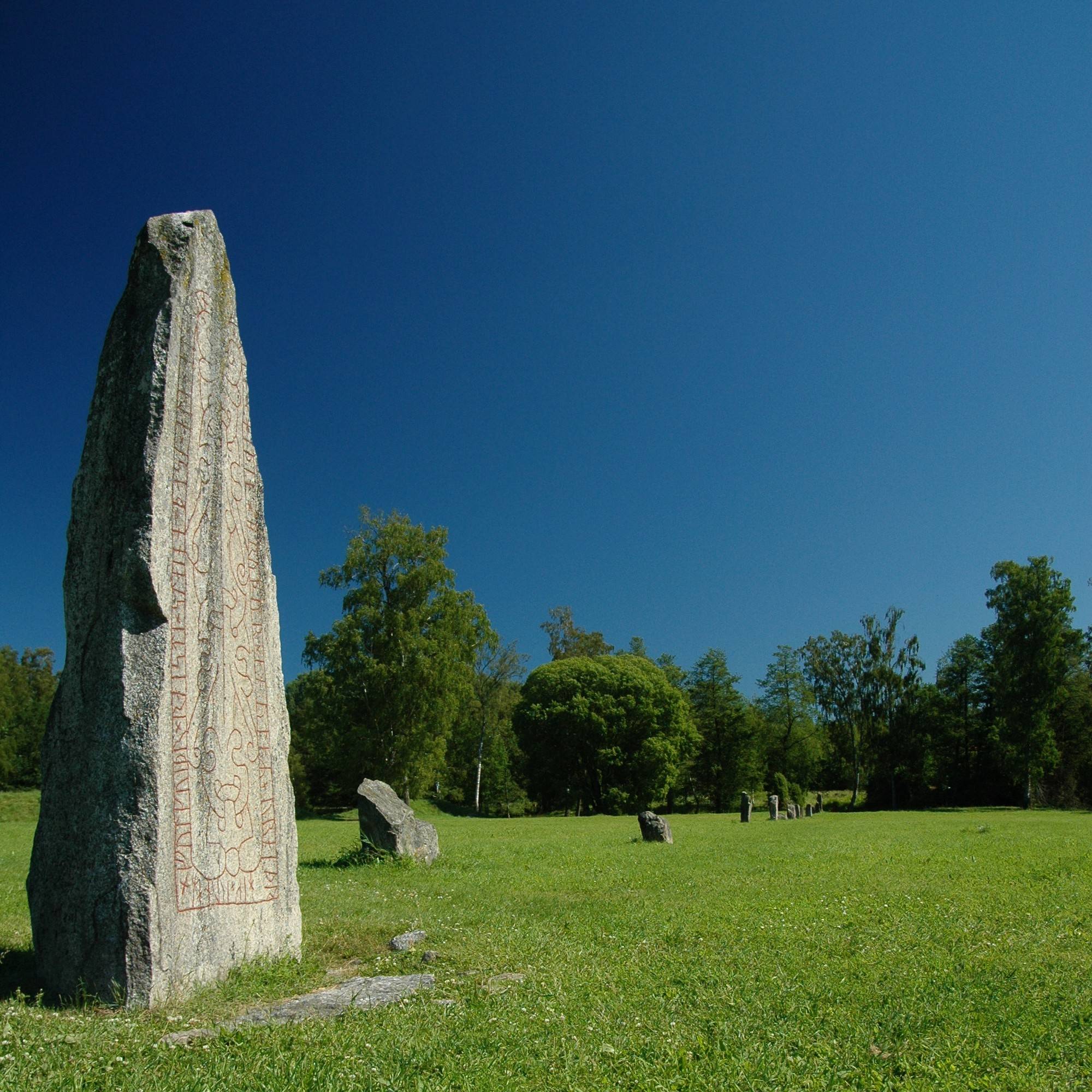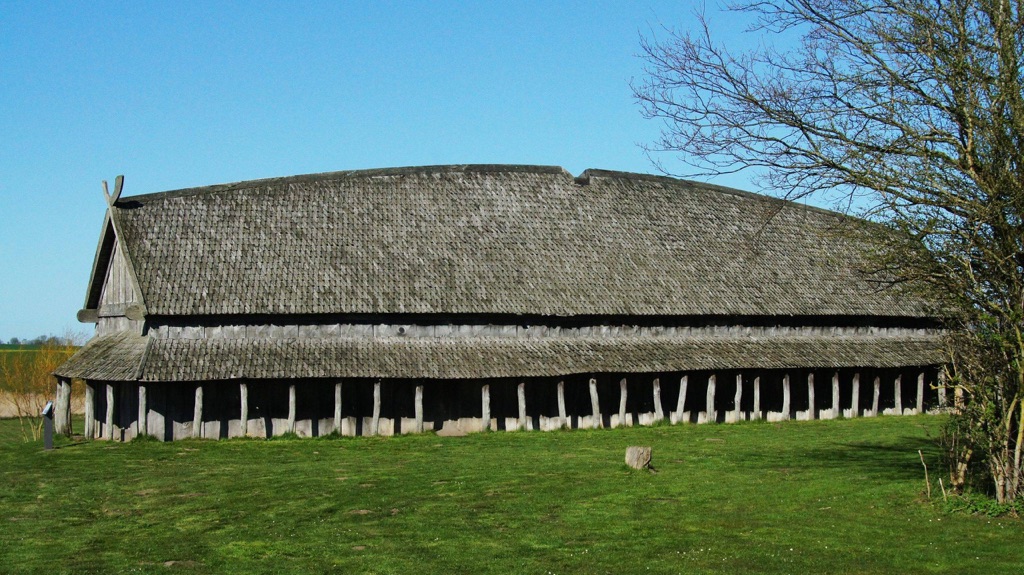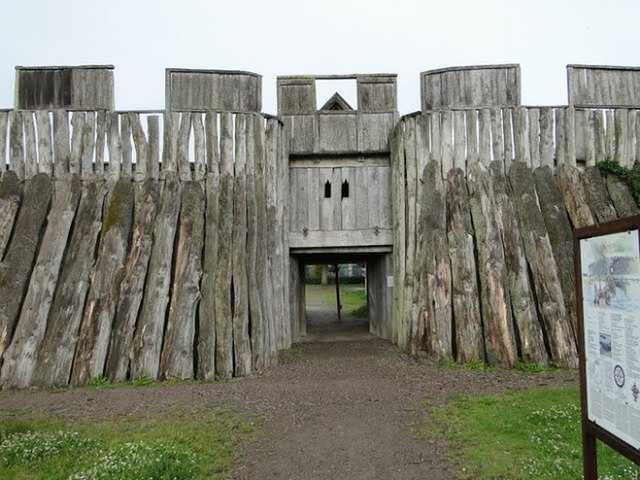Located in the Danish town of Slagelse, Trelleborg Viking Fortress stands as a testament to the ingenuity and strategic prowess of the Vikings. This circular fortress, one of the best-preserved of its kind, offers a fascinating glimpse into the Viking Age, a period that shaped much of Northern Europe’s history.
Vikings

The Vikings, a term often synonymous with Norse seafarers from Scandinavia, were a formidable force from the late 8th to the early 11th century. Their era, commonly referred to as the Viking Age, was marked by their expeditions across Europe, parts of Asia, and the North Atlantic. Originating from what is now Denmark, Norway, and Sweden, the Vikings were not only warriors and raiders but also traders, explorers, and settlers. Their advanced seafaring skills, exemplified by their iconic longships, enabled them to navigate vast distances, from the shores of North America to the rivers of Russia, establishing trade links and settlements along the way. The Viking Age is often said to have begun with the raid on the Lindisfarne Monastery in 793 AD, an event that shocked and terrorized the Christian West. This raid marked the beginning of a series of attacks on monasteries and towns across Europe, particularly in England, Ireland, and France. These raids were motivated not only by the desire for plunder but also by the Vikings’ quest for prestige and the need to establish new trade routes. Over time, these incursions evolved from hit-and-run raids to more sustained campaigns of conquest and settlement, particularly in areas like the British Isles and Normandy. Viking society was complex and multifaceted, characterized by a well-defined social structure. At the top were the jarls, the noble class of warriors, traders, and landowners. Below them were the karls, the free farmers and craftsmen who formed the backbone of Viking society. At the bottom were the thralls, slaves captured during raids or born into servitude. This social hierarchy was underpinned by a rich tapestry of Norse mythology and paganism, with gods like Odin, Thor, and Freyja playing a central role in Viking culture and religious practices.
Viking Archaeological Sites and Artifacts
FAQ: Understanding the Vikings

Who defeated the Vikings in England?
The Vikings were ultimately defeated in England by the Anglo-Saxon king Alfred the Great. His most notable victory was at the Battle of Edington in 878, where he defeated the Viking army led by Guthrum. This victory led to the Treaty of Wedmore, which resulted in the partition of England, with the north and east (known as the Danelaw) being controlled by the Vikings and the south and west remaining under Anglo-Saxon control. Later, in the 10th and 11th centuries, the English kingdoms under leaders such as King Æthelstan and King Edward the Confessor gradually reclaimed control from the Vikings.
Where are Vikings originally from?
The Vikings originally hailed from Scandinavia, specifically the modern-day countries of Norway, Denmark, and Sweden. During the Viking Age, which lasted from approximately the late 8th century to the early 11th century, these Norse seafarers explored, raided, and settled in various parts of Europe, the North Atlantic islands, and even reached as far as the northeastern coast of North America. Their seafaring expertise and the design of their longships allowed them to navigate both open sea and shallow rivers, facilitating their widespread travels.
Why did the Vikings come to Britain?
The Vikings came to Britain for several reasons, including raiding, trading, and settling. Initially, their arrival was primarily for raiding, as demonstrated by the infamous attack on the Lindisfarne monastery in 793, which is often cited as the beginning of the Viking Age. The Vikings were attracted by the wealth of the monasteries and the relatively unprotected coastal settlements. Over time, their focus shifted towards trading and settling in Britain. The fertile land and the political fragmentation of the Anglo-Saxon kingdoms made Britain an attractive destination for settlement. Additionally, internal pressures such as overpopulation and political strife in Scandinavia may have driven the Vikings to seek new territories.
Who were the last Vikings?
The term “last Vikings” can refer to different groups depending on the context. In England, the last Viking king was Harald Hardrada of Norway, who was defeated and killed at the Battle of Stamford Bridge in 1066 by the forces of King Harold Godwinson of England. This battle is often considered the end of the Viking Age in England. However, in a broader sense, the Viking Age is generally considered to have ended with the defeat of the Norwegian King Olaf Haraldsson at the Battle of Stiklestad in 1030 and the subsequent Christianization of Scandinavia. The Norse settlers in Greenland, who disappeared in the 15th century, could also be considered some of the last Vikings in terms of maintaining the Viking lifestyle and culture.

